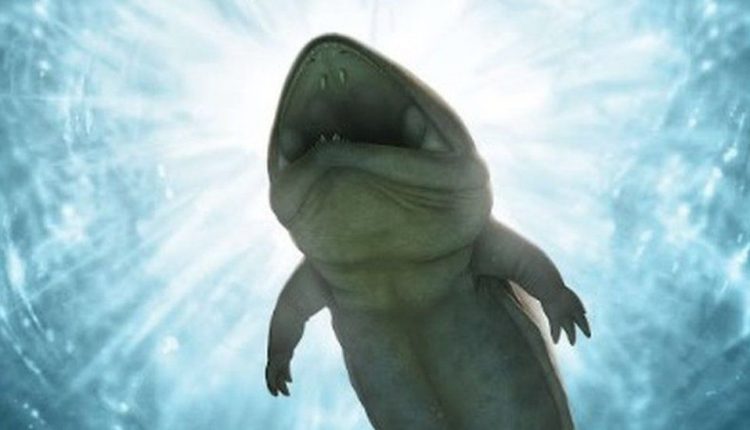Ancient Lizard-Like Amphibian Species Discovered in Australia
Ancient Lizard-Like Amphibian Found in Australia

A groundbreaking discovery has revealed an ancient lizard-like species that once inhabited Australia approximately 247 million years ago. This remarkable finding has solved a mystery that had intrigued scientists since the 1990s, when a retired chicken farmer stumbled upon the fossilized remains of this creature in New South Wales.
Less than ten fossils of this lizard-like species have been identified worldwide, making this discovery an exceptional breakthrough in the field of paleontology. Experts suggest that this revelation could potentially reshape our understanding of the evolution of amphibians in Australia.
The story behind this discovery dates back nearly three decades when Mihail Mihaildis, the retired chicken farmer, was trying to fix a broken garden wall at his home in Umina, north of Sydney. His purchase of a large sandstone slab to repair the wall led to the unexpected revelation of the fossilized creature’s outline within the stone’s layers.
Recognizing the significance of his discovery, Mihaildis contacted the Australian Museum in Sydney in 1997, where he handed over the fossil. This fossil would later become a pivotal component of Lachlan Hart’s PhD research, who, as a 12-year-old, had initially seen the fossil on display in the museum.
Lachlan Hart and his team were studying life during Australia’s Triassic era, about 250 million years ago, when they were granted the opportunity to identify this fossil. The fossil, astonishingly well-preserved, includes a nearly complete skeleton along with fossilized skin and fatty tissues around the creature’s body—a rarity in paleontological finds.
Analyzing the data, Hart and his colleagues estimate the amphibian’s length to be around 1.5 meters, with a body shape resembling that of a salamander. The newfound species has been named Arenaepeton supinatus, translating to “sand creeper on its back” in Latin.
Scientists believe that this carnivorous amphibian once inhabited the freshwater lakes and streams of Sydney. Belonging to the resilient Temnospondyli family, this species managed to survive two of Earth’s mass extinction events, including the catastrophic eruptions that led to the extinction of most dinosaurs 66 million years ago.
This discovery sheds light on Australia’s role as a refuge for animals to evolve and thrive after mass extinction events. Only three other fossils of the Temnospondyli family have been successfully identified in Australia.
The groundbreaking fossil will be put on permanent display at the Australian Museum later this year, offering a unique opportunity for visitors to witness a piece of Earth’s ancient history.
